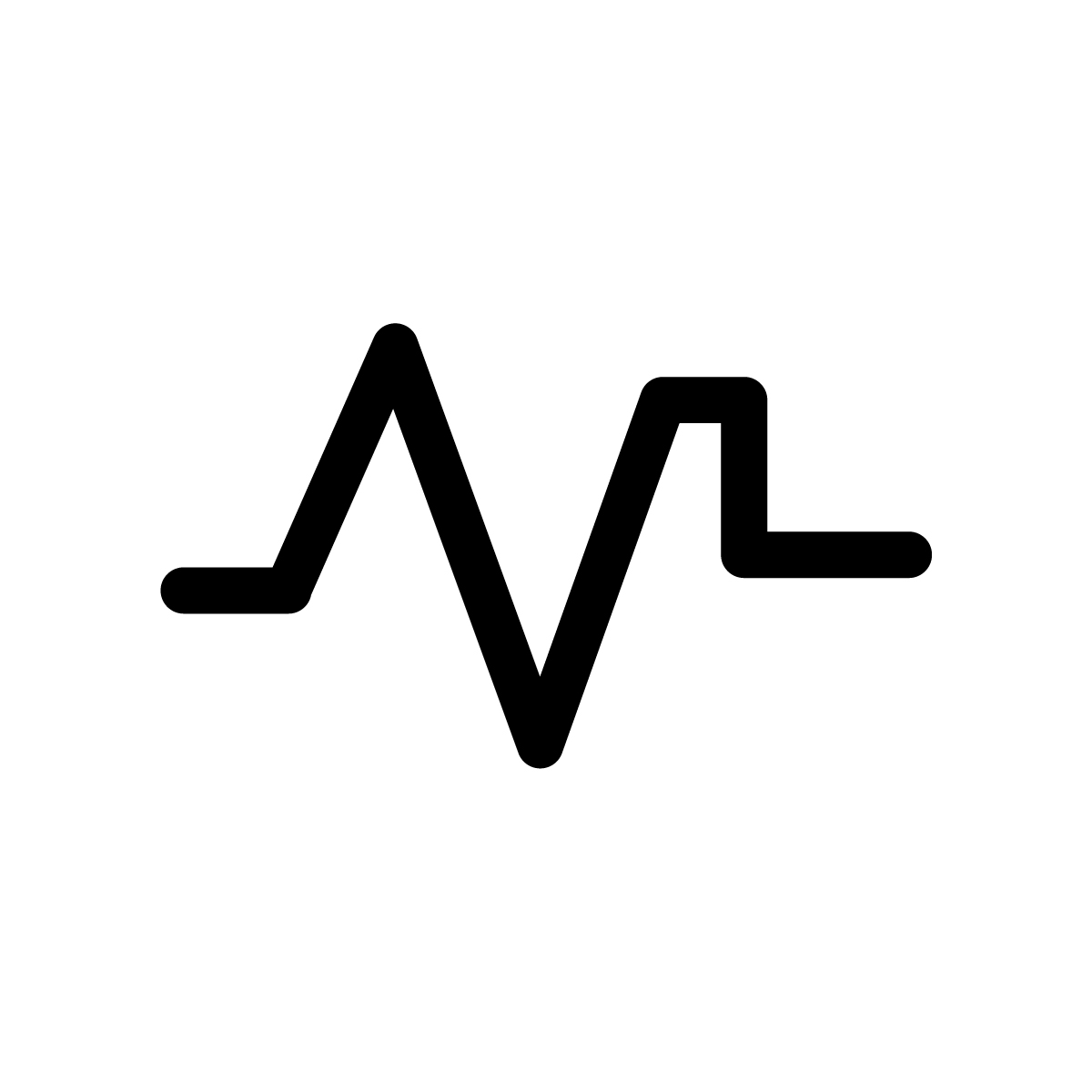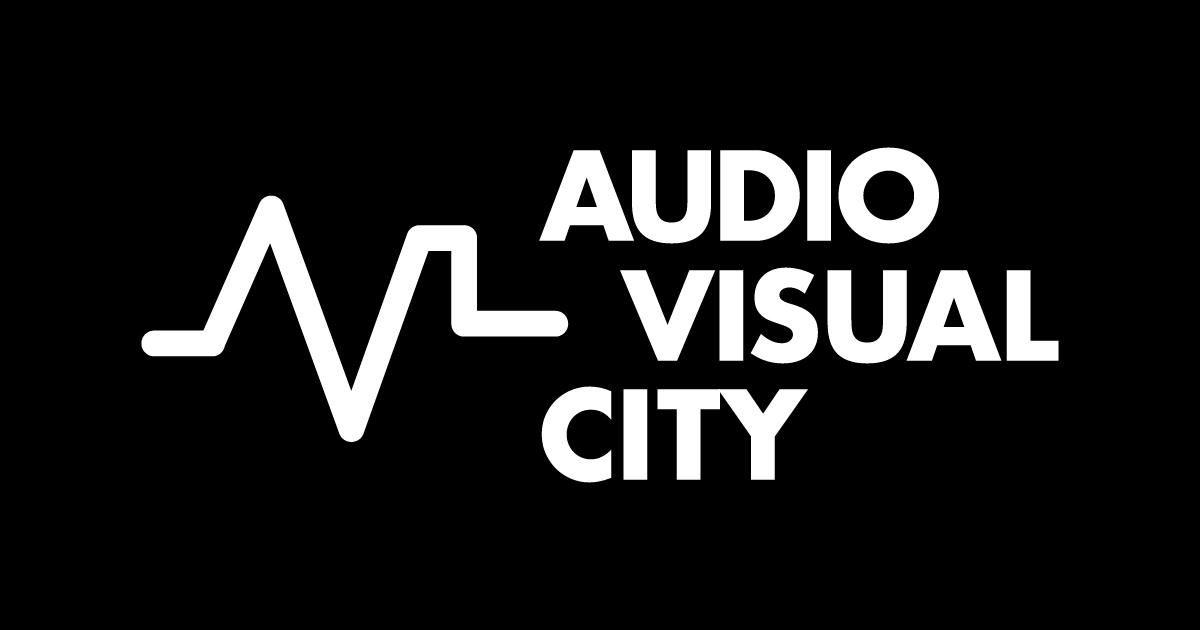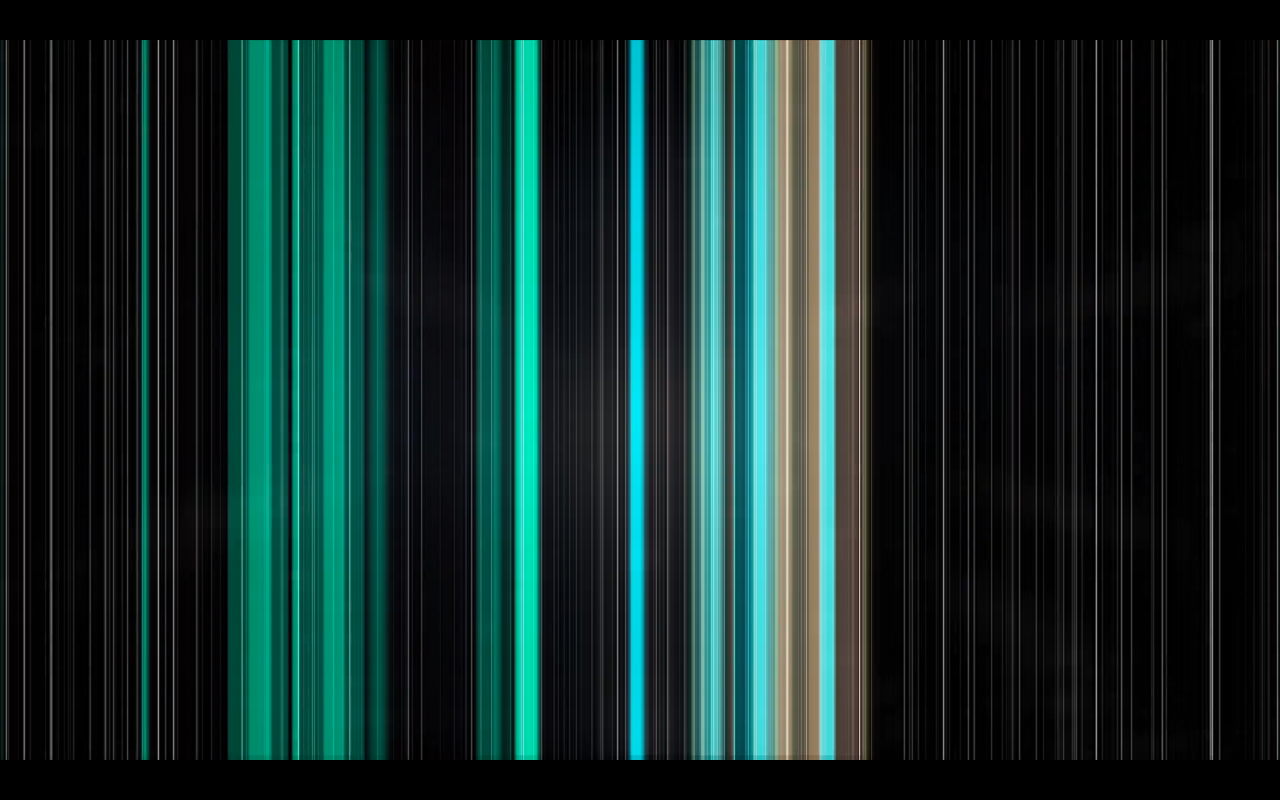I have been exceptionally lucky to be able to pick Overlap’s Michael Denton’s brains with all of those nitty gritty questions about their career that every visual artist wonders about. How did they get to be where they are? What was the VJ scene like in the nineties? How is their relationship with technology and whose work inspires them?
Overlap are true veterans and represent original artists on the audiovisual live performance scene, not only have they experienced more changes in performance technology than I’ve had hot dinners, they’ve been up there with some of the most popular artists of our time, performing with the likes of Chemical Brothers and have animated artwork by Damien Hirst.
You have presented your work in some of the most prestigious international galleries around the world, including the Pompidou in Paris, Tate Modern, and the Victoria and Albert Museum as well as done a VJ set with the Chemical Brothers. What is the project that you are most proud of?
Remixing and VJing The Beatles Magical Mystery Tour film for its cinema première at the South Bank with Noise of Art was a highlight.
We’re pleased with the editions on SeditionArt. They incorporate a lot of ideas from the past and are also feeding into some future shows. Musically, Greylight Green is something that works when you’re in the right mood. As these recent editions highlight, we’ve always been at the more arty end of the Vjing/music industry, and the more musical end of the art world. The music industry and the fine art worlds attribute value in such different ways. But twenty years ago, we were lucky to stumble into a certain era of EDM culture, it was like the early days of flying’s uncharted freedoms. In Turnmills nightclub in Holborn, I remember one of the guys from Reality Check, (the house VJ and AV team, for nights, including The Gallery and Trade etc), saying they showed art to thousands of clubbers every week – and they did. Hopefully for an audience the circling and repeating imagery of VJ-ing done well can create a kind of memory image burn effect – they go home with a ‘memory painting’
Fine art galleries and big projects have not necessarily been the most rewarding – the really interesting moment for us was being at clubs and festivals with a large amount of freedom, developing a style of imagery and delivery without record companies and DJ Managers controlling what we did. It was genuinely creative and new, yet fulfilling a need. This for any artist is a luxury.
Early on we’d be flown out to Creamfields in Andalucia with Microchunk, or wherever, and literally be immediately on stage with a 50k audience and the DJ, no pre planning or rehearsing, ” 5 mins guys”, maybe an artist logo at the beginning, then mix.
As Overlap you have experimented with the majority of the audiovisual art formats. Is there one in particular that you enjoy?
Long VJ sets are a nice journey, in medium sized venues with a few different feeds going into multiple screens and low lighting. AV sets are always a bit more stressy – as doing the visual/music/sound for maybe 40 mins, feels more contrived/pre planned and edgy. Multi screens can make things a lot more architectural/sculptural, with 3d projections on objects etc, and simpler more graphic imagery. So a mixture of graphic and more pictorial screens is a nice balance. Again we tend towards a more art bias, whereas a lot of club imagery is a fairly bombastic extension of the lighting show – think rising chevrons. Equally a very simple installation/projection on a gallery wall can be really satisfying. For AV sets, good acoustics and smaller venues suit the minimal music we make.
I’m sure you have collaborated and met with many of the world’s most famous audiovisual and new media artists on the scene. Who particularly inspires you?
Loads of things inspire me, from motorcycling to design and architecture. More recently though works/gigs by Ryoichi Kurokawa, Fuse, some of the things AntiVJ have done, Davide Quayola. Nils Frahm, Biosphere, through to more obscure music form France Jobin to gallery based artist like Mat Collishaw. But also painters like Nigel Cooke, with his circuitous multi picture planes that create a pictorial balance that your eye follows round and around – comparable to good VJ mixing. We were lucky to be part of a talented group of VJs represented by Microchunk in our VJing hey day – unique underground artists. I think we all inspired and motivated each other to push further artistically. Lady Pat and Grand Dame are two of Anna’s favourite, similarly self taught, audiovisual artists.
The art of VJing is a relatively new term for the art of live video mixing. When did you first become aware of the term and how has it changed for you over the years?
Firstly it was the definitive move away from the pop video, which had been: point camera at people singing the song, illustrate/narrative/advertise – ie. TV. So the culture of EDM remixing, had the authority to legitimize its visual equivalent and create the context for VJing. It’s a term I’m not overly fond of, but it does put you on the stage side of technician, ie you make and shape content – not to demean the amazing art, that is light mixing, house sound, etc. VJ content is a form of visual serialism, like music about patterns, removing the asymmetry of drama, its infinitely more complex in its potential multi layer/screen applications than linear media, maybe more so than music.
When I was at Chelsea art school, there was Glitch (first time around, VHS crash editing, late 80’s), video artist lecturers talked derogatorily of ‘club wallpaper’,meaning all things shallow. But I was interested in this form, that had a use and the public liked – unlike so much video art of the era.
The first time I got paid to show images in a bar – also in Holborn, was in 1985. The fee, one bottle of wine.
The first time I thought about something like VJing was as a very young kid, around the time the Beatles released The White album, in the back of my dad’s car one evening, driving along country roads in Dorset and thinking about ‘films’ that would be like the trees sliding past the windows. Non narrative loop structures – I certainly didn’t know what narrative meant at the time, but I did have this strange certainty of there being a future for this sensory/sensual idea. The first time I got paid to show images in a bar – also in Holborn, was in 1985. The fee, one bottle of wine. Then I showed an AV Album work called Open at Megatripolis, Heaven, Charing Cross around 1994. I met Anna in the late nineties we got invited to do stuff at the ICA and bars in Shoreditch etc. We formed Overlap and she learned a lot of the Adobe programmes very fast and we started to get paid to VJ, both loving the visual depth, luminosity and surprises that multilayering and keying threw up.
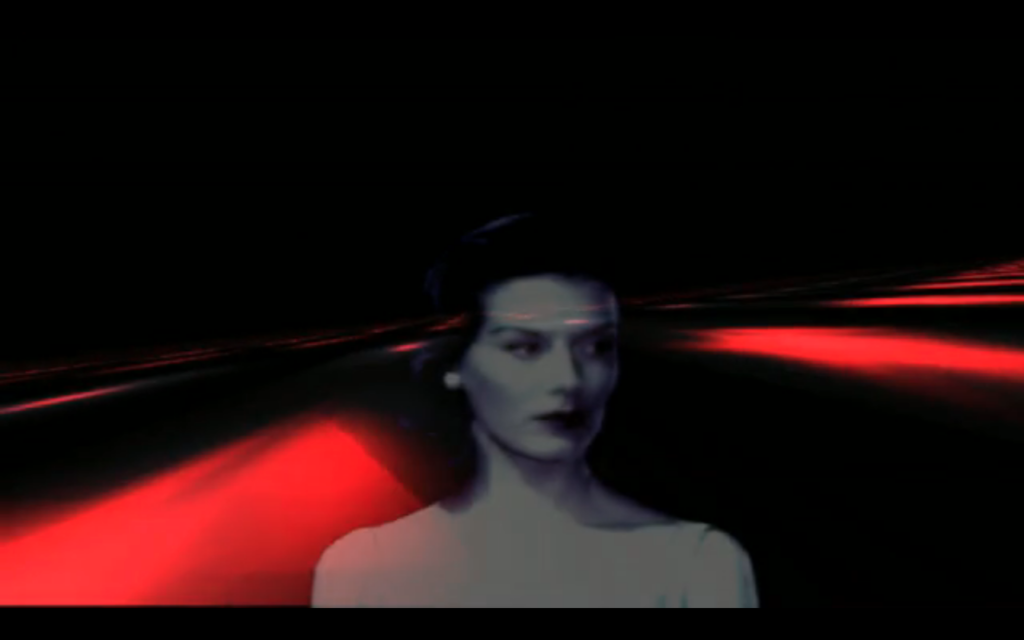
How would you define the difference between an AV set and a VJ set? Could you describe one of your set ups to us?
People I know who travel the world for major DJ acts are operating in a different world from small AV acts. There’s’ a big difference between doing multi screen VJing, with pre programmed triggered clips via midi, osc etc and mixing live on the fly, by feel. Ben Francis who does visuals for Calvin Harris, for example is taking code with BPM info etc, from the CDJ’s, but is also live mixing. Keeping the audio and imagery separate still seems to be an industry standard. The music driving the imagery, which makes sense in some ways, but is also strangely anachronistic. When we do an AV set we have married imagery to 8 bar loops, some elements are locked with time code if we’re using a separate music source, CDJ’s etc and some not, to make it more organic. Most AV performers drive Resolume with Ableton or code, or at least lock them. Unusually, we use Resolume a lot for sound.
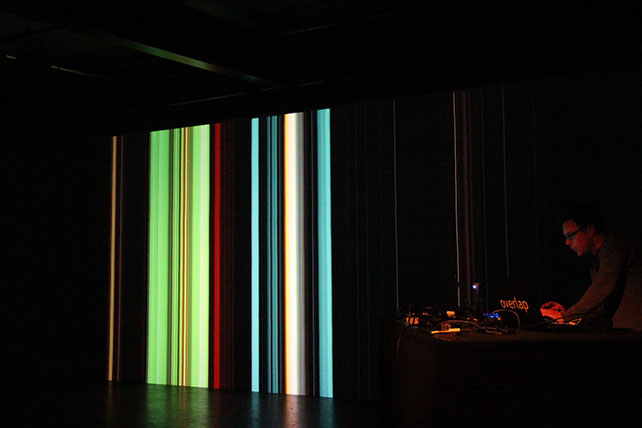
AV shows can be done in so many ways. In the end it seems the content and the feel of what you’re doing is probably more important than how you’re doing it. How much do you want to do live – how much does the audience care how dexterous you are? DJ’s spend a lot of time dramatically illustrating that they’re turning a mixer knob, that appears to have the equivalent friction of pulling a ship back up a launching ramp, they haven’t got anything else visually to do. Where as, if you’re doing a multi 4 Bar loop AV set, five layers deep and you’re triggering them live, you’re busy with no time for the high friction mixer antics.
Recently we’ve been using performance tools like Resolume to create on as well as a performance tool. I tend to pick it up like a guitar and mess around, sometimes its a really useful ‘writing’ instrument too.
As a Barcelona resident, I can’t help but notice that you once had regular visual slots at Razzmatazz. Tell me more about that! How was the VJ scene in Barcelona back then? How is the scene in the UK these days?
This was VJ-ing with visual specialists/agency Microchunk , who were represented by William Morris, which meant we were well looked after. There was a core group of artists including Lady Pat, Mischa Ying, Ben Francis, Muthabored, Todd Graft and ourselves and we were lucky to perform and make installations everywhere from Norway’sHove festival, to Glastonbury. In Barcelona, we’d perform two nights, mainly at The Loft, Friday and Saturday from around 11pm till 6.30 in the morning, sometimes just Anna and I, but often other VJ’s. The local VJs were very gracious about us filling their slots. It was always full on at Razzmatazz, a really intense atmosphere. The club was always packed.We’re not really involved with the UK club scene at the moment, but friends who work for major acts seem to be far more controlled by a corporate plan.
You have both lived through a plethora of technological developments throughout your careers, starting with the use of VHS in your installations. What is your relationship with technology? Is it one of love and hate or it is a match made in heaven?
Anna and I are different generations – before I met Anna, I spent a lot of time blagging my way into analogue beta edit suites in Soho to make material – it was tricky, but looking back people were incredibly kind and helped me realise effecting footage shot on motorcycle trips with a clockwork Bolex. Anna and I started at the point of very low resolution VJ software – so we used hybrid mixtures of micro chapter DVD loops and Flash loops mixed with V4’s. I like the things that technology makes possible, but get frustrated with the art world tendency to think if you ‘paint ‘ with technology, that you should necessarily be using the very latest tech and trend. I enjoy mapping and responsive VR etc, but equally I like the confines of a rectangle and a painters vocabulary. Music doesn’t seem to have the same linearity, no one would think it odd playing a 1960’s Fender.
I enjoy mapping and responsive VR etc, but equally I like the confines of a rectangle and a painters vocabulary. Music doesn’t seem to have the same linearity, no one would think it odd playing a 1960’s Fender.
I notice that landscapes have been a recurring theme in your work, right up to your most recent project of Transitional Landscapes. What is it about landscapes as a subject that inspires you?
We all project memories and feelings onto our immediate surroundings. Landscape is a good genre to play with the relationship between still and moving imagery, the romantic v the analytical, the unveiling of narrative contrasted by the implicit ambiguities of painting (movies v fine art).
Mixing trees from around the world is strangely satisfying, they’re overlaying branches having a legitimacy. English copses with New World deserts keyed through wallpaper and fabric’s repeated motifs reference Richard Dadd’s The Fairy Feller’s Master-Stroke’s, heightened stillness, petrified trees and flattened nature, more tapestry than living environment. Then we can add other man made impositions, ghosts of utilities, power lines, imagined data paths, architectural plans, wiring diagrams and intimate blinking status LEDs. It seems to suite a first person view, apart from narrative.
What would be your advice be to young audiovisual enthusiasts who are keen to develop their careers in the industry?
Like the fine art world there are so many different strands of audiovisual arts. It will keep changing, entertainment will morph. How and what ‘artists’ do v creatives and ‘technicians’ etc is complicated. The EDM model was that music was the most important element – but now with performance more of an earner than record sales – maybe the creatives/technicians/, (not the artists) are the main act. To further confuse it all, AV is crossing over with fine art and stage design etc. So maybe listen to everyone and ignore them all.
Find out more about Overlap on their artist page
